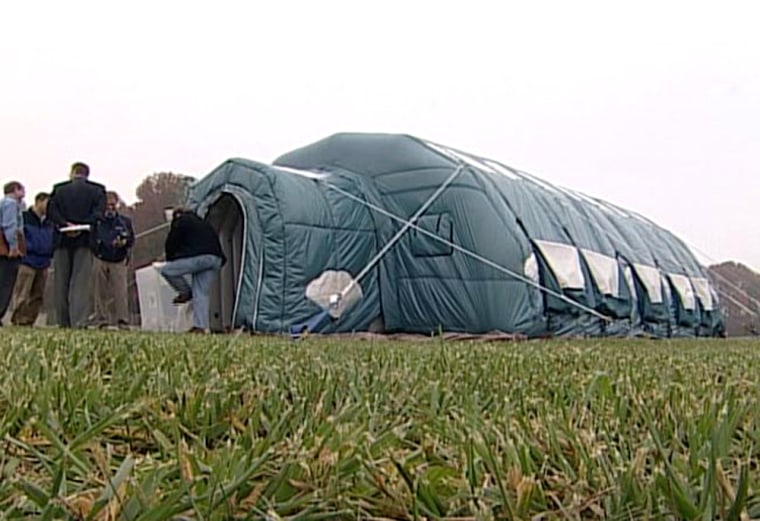An inflatable habitat designed for explorers on the moon or Mars is headed to Antarctica for a test run.
The habitat — built by ILC Dover and resembling an inflatable backyard bounce for children — will make its South Pole debut early next year. NASA demonstrated the inflatable prototype on Wednesday at ILC Dover's facility in Frederica, Del.
"We deflated [and inflated] it in about 10 minutes," Larry Toups, habitat lead for NASA's Constellation Program Lunar Surface Systems Office, said in an interview.
Toups and several other habitat designers from NASA's Johnson Space Center and ILC Dover will attempt to deploy the structure in the Antarctic this coming January. Their goal: to use just four people and deploy everything in four hours. Working in bulky cold weather gear will also make the deployment more analogous to the challenges that will face astronauts clad in cumbersome spacesuits on the moon.
The habitat prototype will eventually serve as a multilayered test platform for new technologies such as health monitoring systems, self-healing materials and protective radiation materials. When not inflated, the habitat can save on space and weight during transportation. It's just one of several models that are under scrutiny by NASA engineers. Another prototype, for example, stands on eight legs and has two pressurized cylinders connected by an airlock door.
Other researchers at McMurdo Station in Antarctica will use the inflated habitat as a staging area from January 2008 to February 2009, allowing the designers to monitor its performance using human reports as well as data from embedded sensors. NASA and the National Science Foundation hope to learn how the habitat material behaves in a cold environment and how well the structure retains heat and atmosphere.
Toups said the field demonstration will show that the structure can be "packaged in a small volume" but still "expand to a usable, habitable volume," even in an extreme environment. If NASA likes what it sees, a second- or third-generation inflatable habitat could deploy to the moon as early as 2020, with four-person crews making weeklong trips to get a lunar base operational.
The space agency is not alone in considering inflatable living modules. A private company, Las Vegas-based Bigelow Aerospace, has already launched two inflatable modules into Earth orbit in anticipation of assembling a new space station by 2012.
